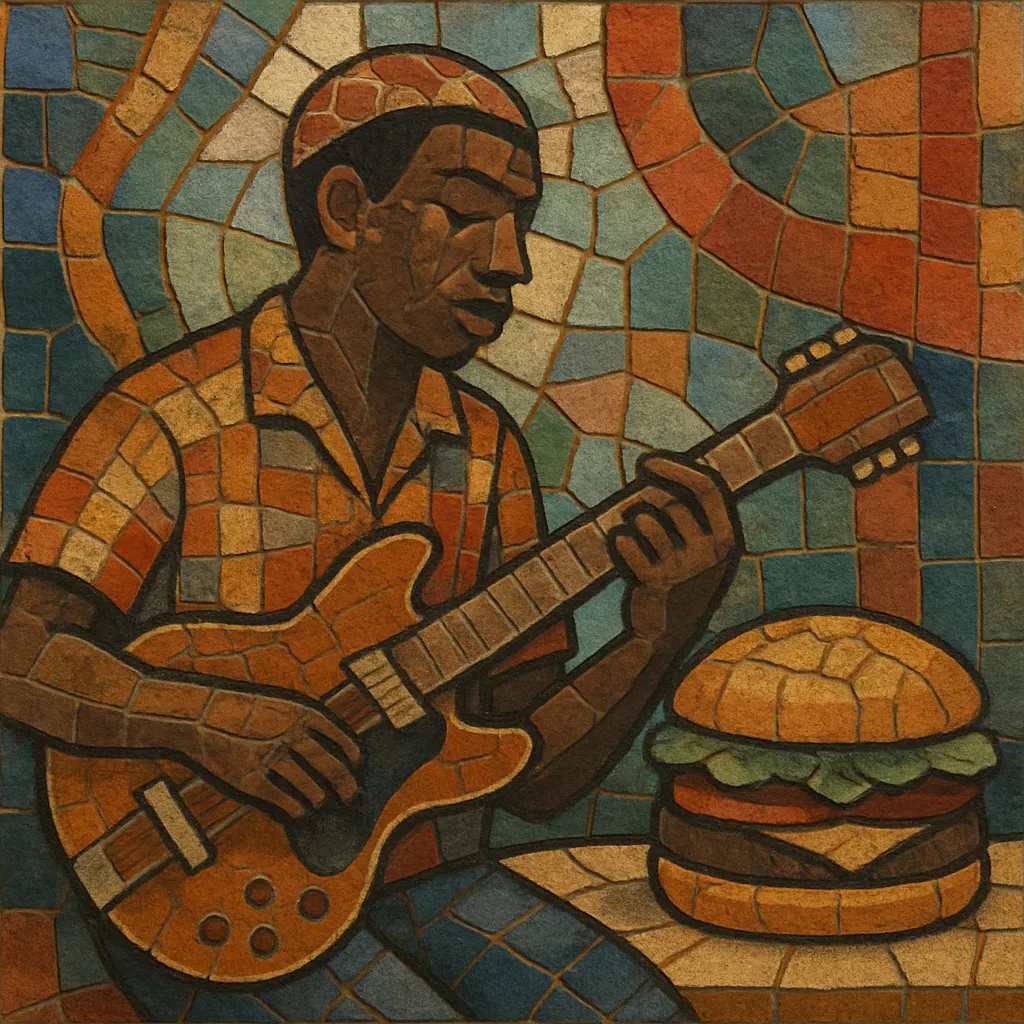Burger-highlife is a Ghanaian highlife offshoot that emerged among the Ghanaian diaspora in West Germany in the 1980s.
It fused classic highlife guitar lines and call-and-response vocals with disco/boogie grooves, drum machines, and shiny 1980s synthesizers. The name “Burger” alludes to Hamburg (and by extension German cities where Ghanaian musicians settled) and signals the genre’s cosmopolitan, migrant roots.
Characterized by mid-tempo 4/4 dance rhythms, crisp rhythm guitar, synth bass, bright horn stabs (often played on keyboards), and bilingual lyrics (Twi/English), burger-highlife delivered a sleek nightclub sound that modernized highlife for dancefloors and cassette markets across Ghana and the diaspora.
Ghanaian musicians who migrated to West Germany (notably Hamburg, Berlin, and Düsseldorf) began reimagining highlife with the tools and tastes of Europe’s disco and boogie era. Access to professional studios, drum machines, and synthesizers allowed these artists to streamline the polyrhythmic highlife feel into a glossy dance sound. George Darko’s early 1980s recordings (e.g., “Akoo Te Brofo”) became emblematic templates.
By the mid-1980s, burger-highlife flourished in clubs and on cassettes, with acts like Daddy Lumba (often paired with Nana Acheampong), Charles Amoah, and Lee Duodu popularizing a polished, synth-led style. Clean rhythm guitars, LinnDrum/TR-series patterns, and bright keyboard brass defined the sound, while lyrics explored love, longing, and the migrant experience.
As Ghana’s music scene digitized and hip hop influences entered the mainstream, burger-highlife’s production aesthetics—loops, drum machines, and catchy hooks—fed directly into hiplife. Some leading figures evolved toward contemporary pop and highlife hybrids, while others continued the burger sound from Europe.
Burger-highlife remains a key bridge between classic band highlife and modern Ghanaian pop. Its sleek, synth-forward blueprint anticipated later Afrobeats textures and continues to inspire reissues, DJ sets, and contemporary Ghanaian producers looking to blend tradition with 80s-leaning nostalgia.


